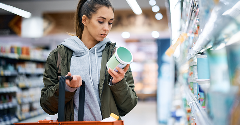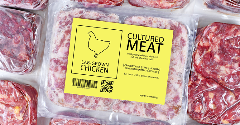News
Front-of-pack labels gaining support, but not everywhere
6 Apr 2022More and more frequently, consumers want to know what is in their food. While ingredients lists have long been present on packaged goods, front-of-package labeling has come into vogue in recent years as a shorthand signal to consumers about whether a product is healthy or should be considered ‘junk food.’
In Mexico, Israel and Chile, front-of-pack labeling schemes are already mandatory. However, worldwide, calls for mandated front-of-pack labeling schemes that help consumers identify high fat, salt and sugar products (HFSS) are gaining steam. The World Health Organisation (WHO) formally took the position last fall that these labeling schemes are “an important policy implementation tool to promote healthy diets through facilitating the consumers’ understanding of the nutritional values of the food and making healthier food choices and drive reformulation by the food industry.”

According to the WHO, the Americas is one of the most advanced regions globally in terms of front-of-pack labeling requirements. Europe is following closely behind, and the European Commission is continuing to pursue mandatory font-of-pack nutrition labelling plans as part of its revision of packaging labeling under the Farm-to-Fork strategy.
Studies have shown that the voluntary traffic light labelling system (TLS) in the UK and the EU’s Nutri-Score (NS) choice direct consumers to products containing fewer calories as well as less salt, fat or saturated fat. Despite their efficacy, since these systems are currently voluntary, around one in four products do not display these labeling schemes, according to the nonprofit Action on Salt and Sugar.
Not everyone is a proponent
Although the majority of these front-of-pack labeling systems remain voluntary despite institutional support to require them on the packaging, there are opponents.
In the EU, the Italian government remains opposed to the widely-supported NutriScore system. Last fall the Italian antitrust body, the Competition and Market Authority, launched an investigation into five companies using the labeling scheme, saying that consumers may erroneously view the recommendations made on the label as an absolute truth.
In Israel, where front-of-pack labeling identifying HFSS foods has been mandatory since 2020, the United States Foreign Department of Agriculture found “labeling regulation has not had a significant effect on market trends, and sales of labeled products did not decline in this period.”
New supportors the space
Despite obstacles in the path of adoption, several regions are showing a growing interest in these labeling schemes. In the Caribbean, the regional public health sector is advocating to begin using the ‘stop sign’ system that Chile introduced in 2016. This system indicates if a product is high in fat, sugar or sodium and is based on thresholds set by the Pan American Health Organisation (PAHO), which is informed by the World Health Organization.
In the UK, there is growing support from public health organisations and nonprofits to make front-of-pack labeling compulsory. India too is seeing growing support for such a system with the Food Safety and Standards Authority of India (FSSAI) recently announcing that it would begin instituting new requirements for food packaging labels based on a health star rating system.
Related news

‘Health’ labels on products reduce consumers’ willingness to pay
10 Mar 2025
A study into front-of-packaging “health” labelling finds that these labels alone can lower US consumers’ willingness to pay.
Read more
Food industry lags on healthier product formulation, nutrition index finds
7 Mar 2025
The world’s biggest food manufacturers derive just 34% of their sales from healthier products, according to the 2024 Global Access to Nutrition Index.
Read more
Does calorie labelling lead to reduced consumption?
27 Feb 2025
Calorie labelling of food products leads to a small, but consistent, reduction in the number of calories consumed, a study suggests.
Read more
F&B industry hit with fresh greenwashing claims
26 Feb 2025
The food and beverage (F&B) industry is under fresh scrutiny amid claims of greenwashing, with Arla the latest company in the firing line.
Read more
Have scientists discovered a new tool to measure UPFs?
19 Feb 2025
Researchers have developed a new scoring system and database, compiling over 50,000 food items, of which over 1,000 are classified as ultra-processed.
Read more
Singapore explores farmland-free food production
17 Feb 2025
Researchers discover new technology replicating on-farm food production conditions from within the indoor lab environment.
Read more
Most consumers lack trust in AI, but supplement users are ready to embrace the technology
14 Feb 2025
A survey of UK and US consumers found that most supplement users are willing to let AI make decisions on their behalf, but they also demand greater transparency.
Read more
Indians enjoy first bites of cultivated chicken
13 Feb 2025
The first public tasting of cultivated meat in India has taken place as the country prepares for the first commercial cultivated meat products – potentially as early as the end of this year.
Read more
Disruptor brands spearhead sustainable solutions
11 Feb 2025
Manufacturers, big and small, sharpen their focus by providing sustainable products and services centred on comprehensive and sustainable approaches to traditional methods.
Read more
The future of UPF regulation: Stricter labelling, more taxation, and no more conflicts of interest?
10 Feb 2025
Policymakers are intensifying efforts to regulate ultra-processed foods (UPFs), as mounting evidence links their consumption to increased risks of obesity, cardiovascular disease, and other chronic health issues.
Read more